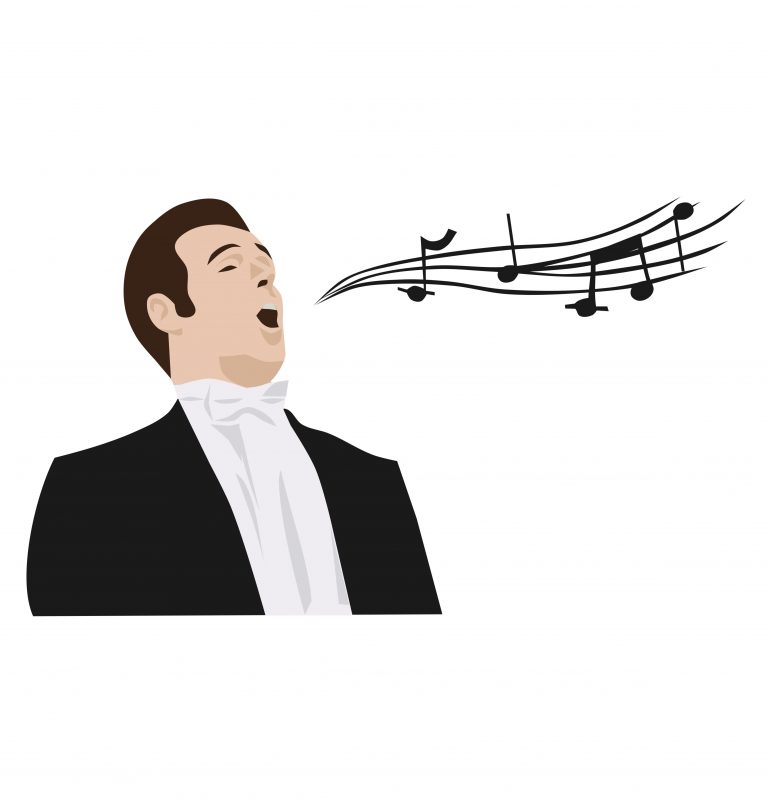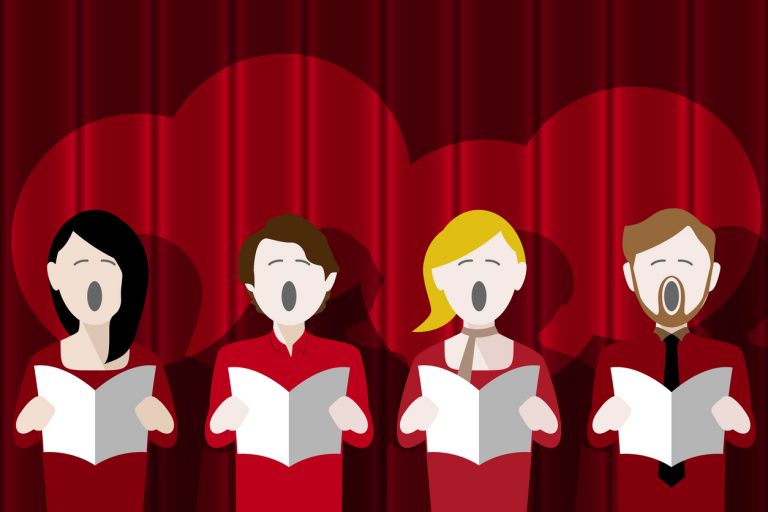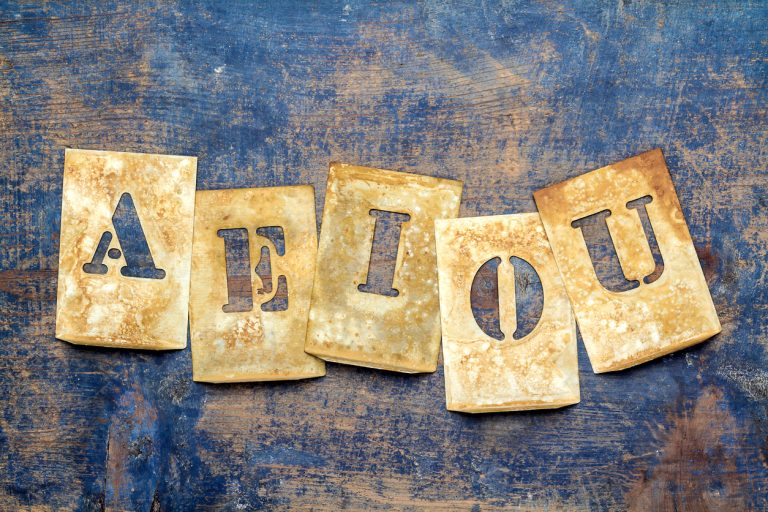Oh Say, Can You Sing… the Star-Spangled Banner?
Can you believe that it’s almost July 4th?! Independence Day is just around the corner, and that makes it the perfect time to talk about our national anthem, “The Star Spangled Banner”. Oh, Say, Can YOU sing the Star-Spangled Banner? Ask almost any singer about performing this song, and a look of fear, or at least hesitation, crosses their face! There’s no doubt that it’s not the easiest melody, or even the easiest lyrics, to sing. And, we’ve all heard it sung badly by a host of singers, from local amateurs to world-famous professionals, so that brings even more negative baggage to the idea of having to sing such a difficult song, and usually in front of a very large crowd!
So, what’s a singer to do?
Well, I hope in this post to demystify the “Star-Bangled Banner”— to help you really understand it, to make it approachable, and most importantly in my book, to sing it respectfully and with deep meaning and patriotism.
Students come into my studio all the time needing to work on this song, as they are asked to perform it at athletic events, school programs, church functions, and any other place where the occasion opens with the singing of the national anthem. They’re either smart enough to be a little scared of it, or clueless enough not to take the task seriously— and in either case, they need help!
Here are some very important hints to help you tackle this song:
1. Know the history behind it! I can’t tell you how many times I ask students to give me the background on this song, and they just stare at me blankly and look uncomfortable. “I think it has something to do with World War II?” one student tried hopefully. “I think it was some battle somewhere?” another vaguely offered. AAAAAAAAAH! Know the history, people!
The lyrics come from “Defence of Fort M’Henry”, a poem written on September 14, 1814, by lawyer and amateur poet Francis Scott Key. He witnessed the bombardment of Fort McHenry by British ships of the Royal Navy in Baltimore Harbor during the Battle of Baltimore in the War of 1812. Key saw the large U.S. flag, with 15 stars and 15 stripes, at that time known as the Star-Spangled Banner, still flying victoriously over the fort, signaling the U.S. victory. Key set his poem to the melody of a popular British song written in 1773 by John Stafford Smith. The tune had already been popular in the United States, and after Key renamed his song ”The Star-Spangled Banner”, it soon became a well-known U.S. patriotic song, and eventually was made the national anthem by a congressional resolution on March 3, 1931, which was then signed by President Herbert Hoover.
2. Know what the lyrics actually mean! This is a biggie. Singers often sing songs because they like the melody, and then don’t really pay attention to what the lyrics mean. How can you sing a song convincingly if you don’t know what each and every word means, and the intention behind the words? This is especially crucial when singing religious or sacred texts, or our national anthem (which many consider to be sacred in its own right!). When a song is in a foreign language, or even in old-style English like our anthem, take the time to “translate” it! I go through the song with my students line by line, and after years of blindly singing it with no real concept of the meaning, they (and I) are often shocked to discover that they actually do not know what every word and every line truly represents.
Before we go further, here’s a fine sample of how to sing “The Star-Spangled Banner” in an inspiring way, featuring operatic soprano superstar Renée Fleming. (Note: You will have to click through to YouTube to watch both the videos in this blog).
Really Understand the Lyrics!
Below is a complete version of “The Star-Spangled Banner” lyrics showing spelling and punctuation from Francis Scott Key’s manuscript in the Maryland Historical Society collection. I will offer my “translation” under each section of the lyrics. I print the other verses for your enjoyment and information, as many people don’t even know there are other verses:
O say can you see, by the dawn’s early light,
What so proudly we hail’d at the twilight’s last gleaming,
Whose broad stripes and bright stars through the perilous fight. O’er the ramparts we watch’d were so gallantly streaming?
This is a question. The singer is asking that since the fighting has been going on since sunset of the previous night, and it is now already dawn, can you still see “What so proudly we hailed” — our flag?. “Hailed” means praised and respected. In the next line, the “broad stripes and bright stars” again refer to the flag, “gallantly” meaning bravely and nobly, “streaming”, waving in the breeze through the “perilous” (dangerous) battle. O’er the ramparts” means the flag was flying over the defensive wall of the fort.
And the rocket’s red glare, the bombs bursting in air,
Gave proof through the night that our flag was still there,
This means that throughout the night, the light of the rockets and exploding bombs made it possible to see the flag still flying over the fort, giving “proof” that the U.S. was winning against the British.
O say does that star-spangled banner yet wave
O’er the land of the free and the home of the brave?
Is our flag still flying over our country? Did the U.S. win?
I’ll leave it to you to read and “translate” the rest of Key’s poem for yourself…
On the shore dimly seen through the mists of the deep
Where the foe’s haughty host in dread silence reposes,
What is that which the breeze, o’er the towering steep,
As it fitfully blows, half conceals, half discloses? Now it catches the gleam of the morning’s first beam,
In full glory reflected now shines in the stream,
‘Tis the star-spangled banner – O long may it wave
O’er the land of the free and the home of the brave!
And where is that band who so vauntingly swore,
That the havoc of war and the battle’s confusion
A home and a Country should leave us no more?
Their blood has wash’d out their foul footstep’s pollution.
No refuge could save the hireling and slave
From the terror of flight or the gloom of the grave,
And the star-spangled banner in triumph doth wave
O’er the land of the free and the home of the brave.
O thus be it ever when freemen shall stand
Between their lov’d home and the war’s desolation!
Blest with vict’ry and peace may the heav’n rescued land
Praise the power that hath made and preserv’d us a nation!
Then conquer we must, when our cause it is just,
And this be our motto – “In God is our trust,”
And the star-spangled banner in triumph shall wave
O’er the land of the free and the home of the brave.
3. It’s about the national anthem, not you! If there is one thing I can’t stand, it’s singers who sing the national anthem with tortured vocal stylings that are not only completely inappropriate to the original style of the song, but disregard the responsibility of singing the national anthem in a respectful way. When singers make it all about a personal showcase where they add every vocal lick and ornamentation in their arsenal in order to show off, I am completely turned off. They have not done their job! (Even in the sample above, Fleming could not resist throwing in a few extra high notes). Call me old-fashioned (I consider it a compliment!), but I like my Star-Spangled Banner traditional, beautiful, and sung with the gravitas that the national anthem of the United States deserves. Shame on all those singers who come out and massacre it for their own grandstanding!
4. However, do sing like a professional soloist. That means you are prepared— you know the words, the melody, what key you sing it in, how you coordinate with the accompaniment (if there is any, live or recorded). You have hopefully had a rehearsal and a sound check (if using a microphone) in the venue prior to the performance. You are dressed appropriately, and you look and sound the part of someone who represents our anthem and what it stands for in a positive and inspiring way. You’re the first thing on the program, so come early, because if you’re late, they can’t wait for you! ’Nough said.
5. Musical and vocal hints to help you prepare. One of the issues with the “Star-Spangled Banner” is that we’ve all sung it for years in a crowd, without paying any attention to our vocal technique. Now that you’ve been asked (or volunteered, you brave person!) to sing the national anthem, there are a few key points that will make it go much more smoothly:
Pick the right key! The song has a large range, so if you pull it too low to accommodate the high notes, that will make the opening verse muddy, and if you set the key too high, you’ll be straining for “and the rockets red glare”. Work with a few neighboring keys over a number of days to make sure what key is truly the best compromise for you. See my post: Choosing a Song That’s Technically Right for You, Right Now
Sing in complete sentences! When we sing it in a crowd, everyone breaks the four-bar phases into two-bar phrases: “O say can you see” (breath) by the dawn’s early light (breath). This makes for choppy and unmusical lines, and bad inhalation and breath support. (Fleming did it in the above example, but the slow tempo and arrangement made it work to good effect). Try to practice singing the longer four-bar phrases, even if you have to bump up the tempo of the song. Your voice will flow more easily, the lyrics will start to make more sense as complete sentences, and you will develop vocal strength, and better control over your breath to boot!
Practice, practice, practice! I can’t say it enough. The more you practice, both on your own and with your accompaniment (whether recorded tracks, a pianist, band or orchestra), the better. Even if you’re singing a cappella (with no accompaniment), bring a pitch pipe or use an app on your phone to get your starting pitch, so that you are always practicing in the correct key every time!
Record yourself, both audio and video. What do you sound like? What do you look like when you sing? It can be a little painful, but also VERY educational to see and hear yourself. You will be amazed at how fast you fix things, both vocally and in terms of your posture and gestures on stage, when you see/hear a recording of yourself in action!
Take a listen to this very straight-forward, heartfelt rendition of the Anthem sung by Country/Pop superstar Carrie Underwood:
Simplicity and great vocal technique can be powerful all on their own, as she so ably demonstrates! There are scads of recordings of “The Star-Spangled Banner” available on YouTube– take the time to discover some truly great ones, perhaps by people you may never have heard of before, not just the latest singers you always see on TV. And, there are fabulous choral and instrumental versions as well, that will inform and inspire your performance of the national anthem!
Remember, singing “The Star-Spangled Banner” doesn’t have to be any more scary than singing any other song—
if you approach it with the care and respect it deserves. You want to emotionally move the audience, and have a profound experience yourself, one that you will always remember fondly and with pride. After using the hints above, no one will ever have to ask, “O Say, Can You Sing the Star-Spangled Banner?”
Have a very Happy Fourth of July, and always remember– sing our national anthem the only way it should be sung— like you mean it!
For more historical information on The Star-Spangled Banner, visit the link below:
https://www.smithsonianmag.com/history/the-story-behind-the-star-spangled-banner-149220970/







